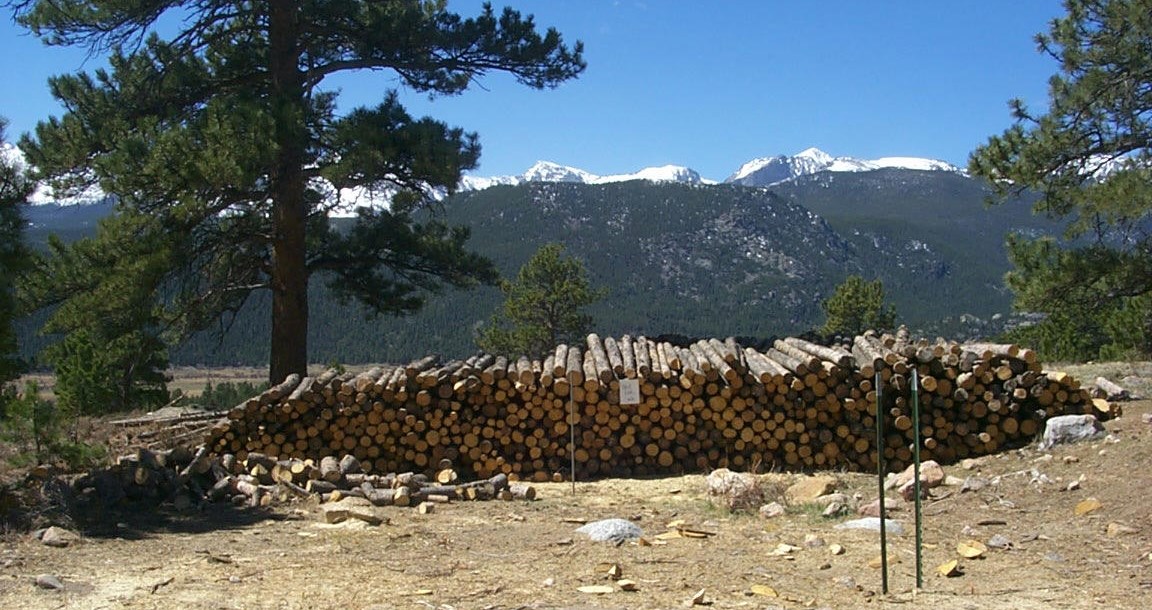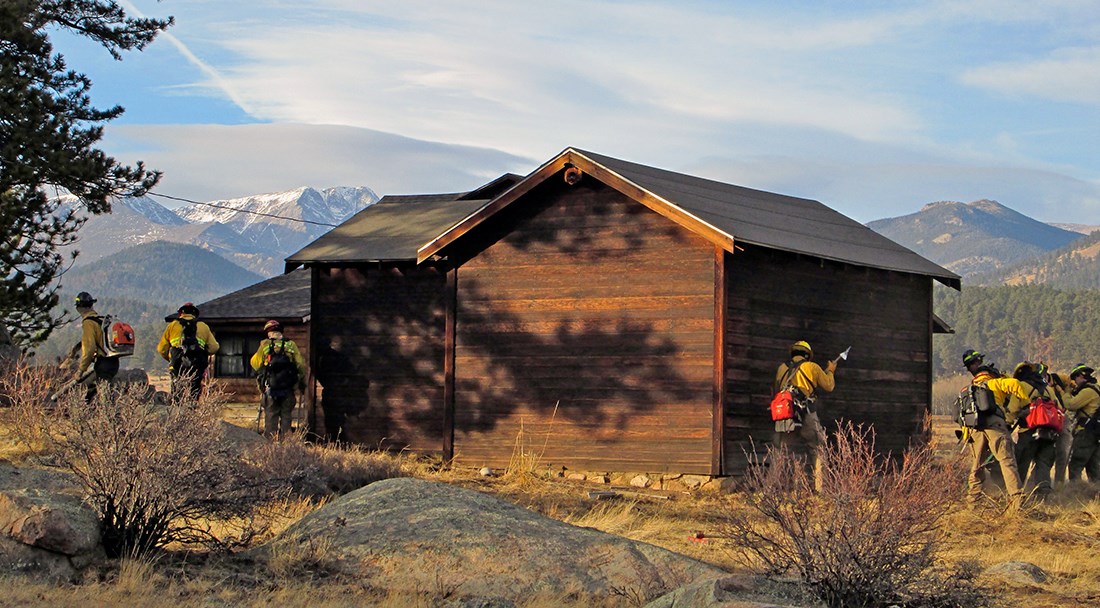Last updated: January 19, 2017
Article
Wildland Fire: Fuels Projects Help on Fern Lake Fire

“As a result of these fuels treatments, the Fern Lake fire only spotted into the grass, and since the ladder fuels had been removed, the fire did not torch any trees.”—Mike Lewelling, fire management officer, Rocky Mountain National Park
When 70 mile per hour winds hit the Fern Lake fire in Rocky Mountain National Park (ROMO) about 1:00 am on December 1, 2012, the fire doubled in size and made a three-mile run in 35 minutes, prompting the evacuation of more than 600 residents of Estes Park, as well as numerous ROMO employees. The fire spotted into Moraine Park, ran through grass fuels toward the Kaley Cottage housing area, and ignited a cabin. The privately owned structure became fully involved, producing embers that started multiple spot fires throughout the housing area.
Firefighters on scene quickly suppressed the grass fires between the structures, stopped the forward spread of the fire, and saved the remaining 26 structures in the housing area. They also lit backfires that successfully stopped the fire before it could cross Bear Lake Road. Had the fire crossed the road, it would have burned outside the park and directly threatened private residences and business along the Highway 66 corridor.

Firefighters were successful in saving the rest of the structures largely due to several years of hazard fuels and bark beetle mitigation projects in and around the Kaley Cottage housing area that began in 2001. Prior to treatments, the area had a heavy fuel loading of dead and downed logs and branches, thick stands of trees, and tree branches that reached the ground, which would have provided a ladder for fire to climb and torch the trees. The ROMO crews removed the dead and downed material, limbed trees, and removed some trees from thick stands. Bark beetles then swept through the area from 2009-2011, killing many of the trees. After the bark beetle epidemic, crews removed more beetle-killed trees.
“As a result of these fuels treatments, the Fern Lake fire only spotted into the grass, and since the ladder fuels had been removed, the fire did not torch any trees,” Fire Management Officer Mike Lewelling said. “This allowed firefighters to directly attack the fire, protect the rest of the housing area, and stop the fire from crossing Bear Lake Road. By stopping the fire, it prevented any further loss of homes and businesses and countless millions of dollars in property damage.”
The Fern Lake fire ignited on October 9, 2012, from an illegal campfire deep in the backcountry of Rocky Mountain National Park. From initial attack forward, the fire was managed under a full suppression strategy; however, because the fire was burning in an inaccessible, remote area that posed unacceptable risk to firefighters, managers monitored the fire while taking suppression actions when the fire moved into more favorable terrain. Various teams managed the 3,498-acre fire from October to mid-December, until suppression efforts and snow stopped the fire’s progression. Due to extremely dry fuels, heavy fuel loading, and deep duff layers, the fire may continue to burn into the spring, especially in the Forest Canyon area.
Contact: Mike Lewelling, ROMO fire management officer
Email: e-mail us
Phone: (970) 586-1287 (office) or (970) 232-5326 (cell)
Contact: Traci Weaver, fire communication and education specialist
Email: e-mail us
Phone: (307) 739-3692 (office)
